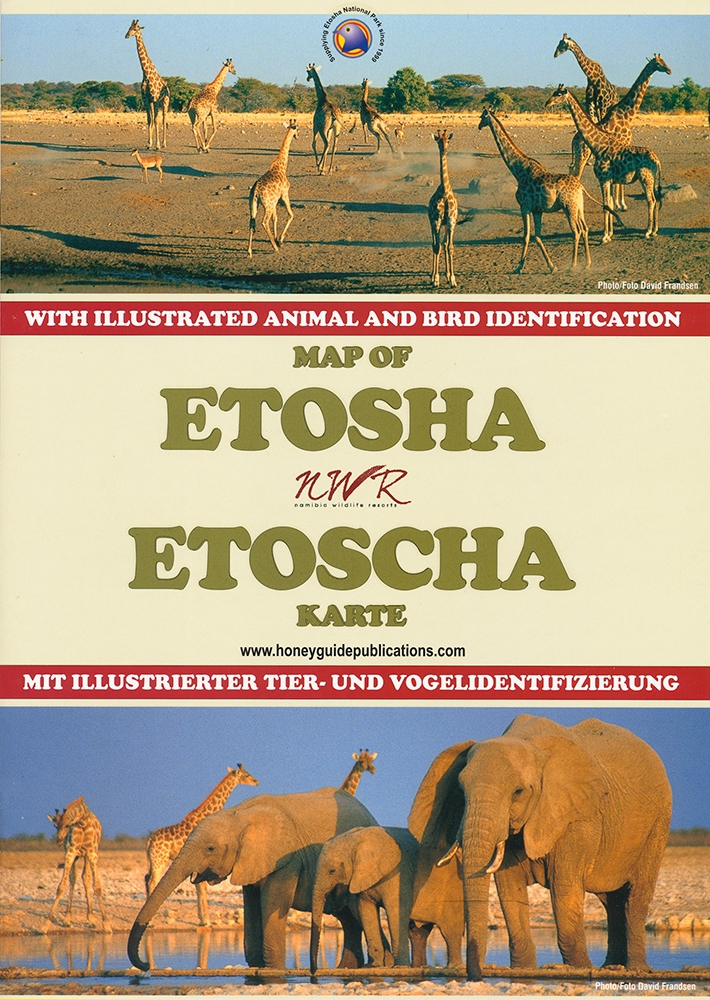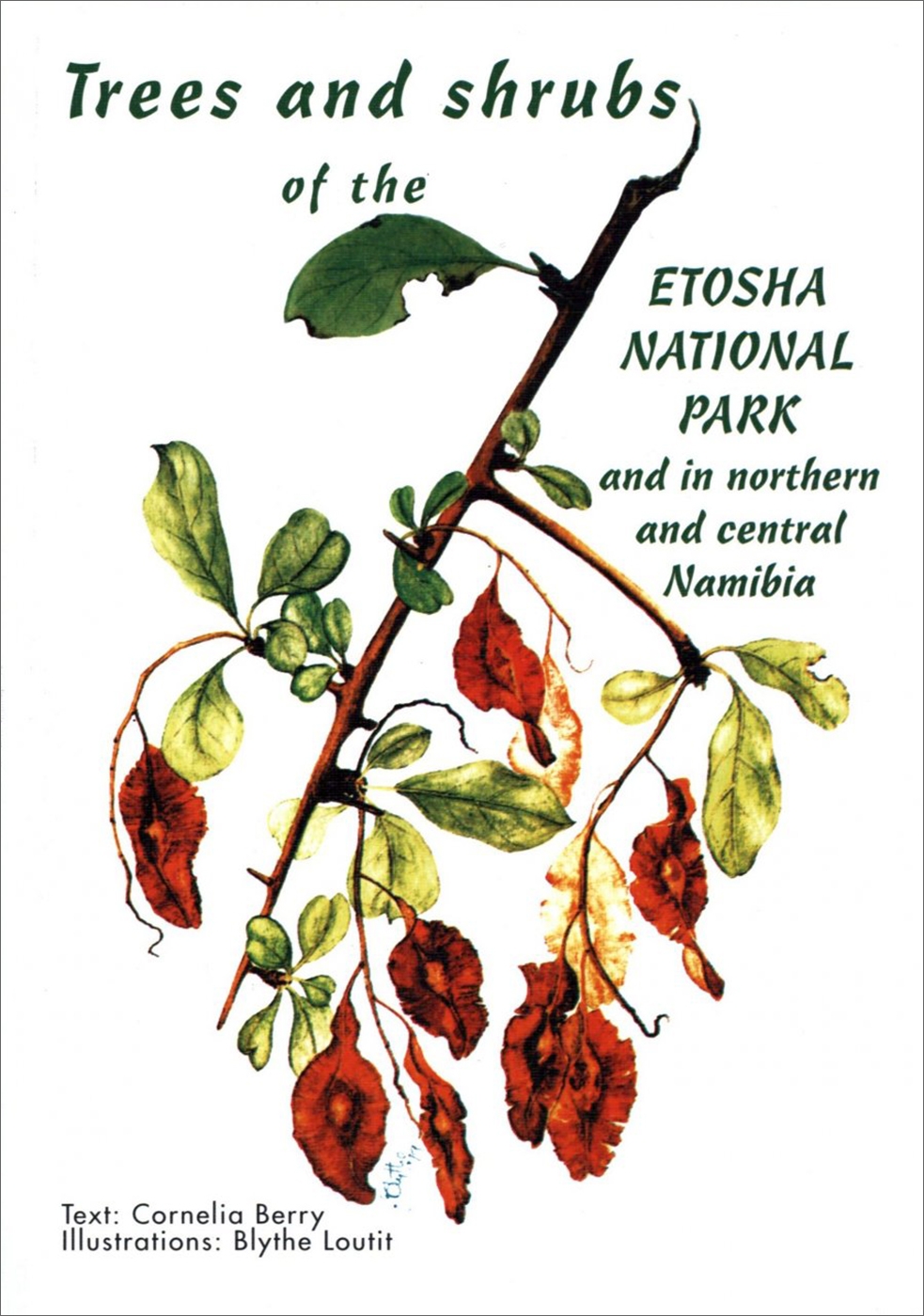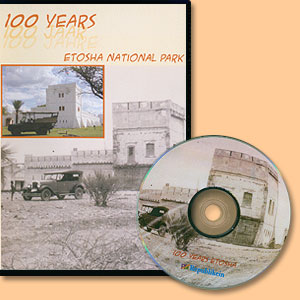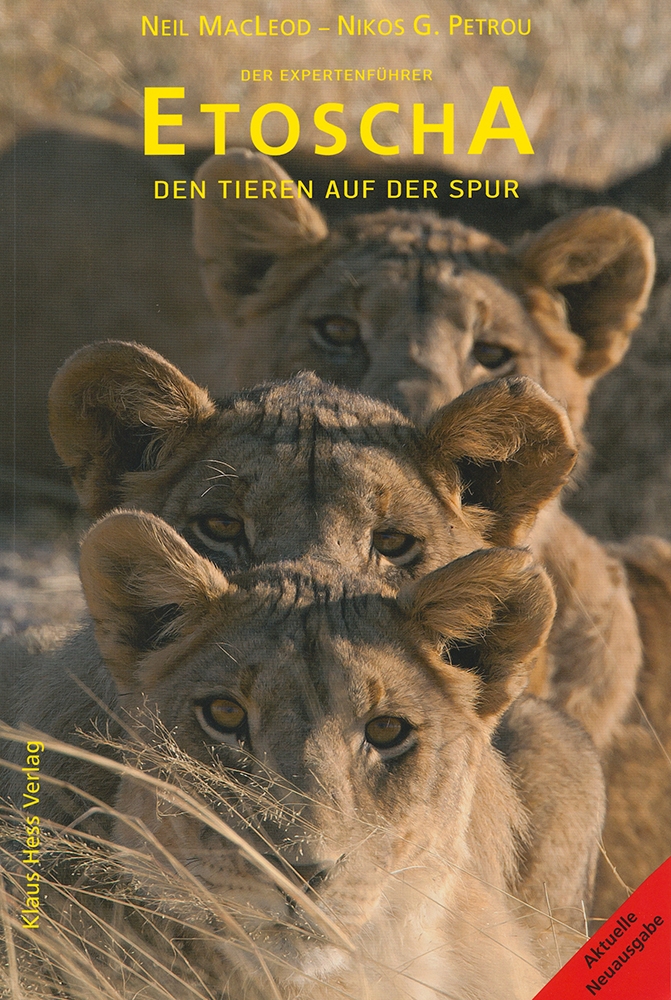Etosha. Celebrating a hundred years of conservation, by Rieth van Schalkwyk
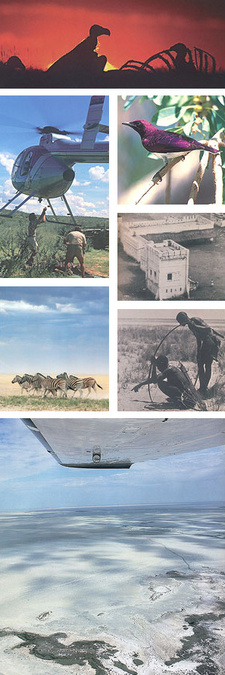
Etosha. Celebrating a hundred years of conservation, by Rieth van Schalkwyk. ISBN 9789991682839 / ISBN 978-99916-828-3-9
From the chapter: Before Etosha - Events prior to 1907. Haillom and !Kung people are recognised as being the original human inhabitants of this region. For 100000 years their hunter-gatherer way of life had little influence on the environment. Rapid changes to the landscape began only 300 years ago when Owambo pastoralists entered from Angola, domesticating the region with livestock, agriculture and iron-smelting technology.
Trees were reduced selectively for house building, palisade fences and firewood. The era of deforestation of the natural vegetation commenced. In addition, increasing human populations gave rise to more veld fires set on purpose to induce early re-growth of grass. Domestic stock populations escalated and the inevitable sequence of overgrazing bush encroachment and desertification was set in motion. The first Europeans entered the scene only 150 years ago, but they changed the landscape more dramatically than during the entire previous 100000 years. The past 100 years of Etosha's existence saw western culture change religions, create political boundaries dividing ecological and cultural units, construct roads across drainage lines, warfare, labour migration and linkage into a cash economy. The present-day Etosha consequently bears no resemblance to the wilderness Andersson and Galton first encountered in 1851. Andersson was a Swede by birth and 'half an Englishman by parentage'. He met Sir Francis Galton in London by sheer chance, after he had written, "The expense of such a journey, was, to me, an insurmountable object." Galton was a gentleman of leisure who was fond of shooting and the open-air life. He was on the point of departing on an expedition to Southern Africa. According to Anderssen, "Galton proposed that I accompany him... promising, at the same time, to cover the whole of my expenses.' The adventurous but almost destitute Swede teamed up with the wealthy Englishman, to explore the hinterland of Southern Africa between 1850 and 1854. Landing at Walvis Bay via Cape Town, the unlikely pair initially travelled by ox wagon and on foot through the Namib Desert and Damaraland before wending their way northwards to find Lake Otjikoto 'the most extraordinary chasm it was ever my fortune to see' and 'one of the most wonderful of nature's freaks'. 'Many Bushmen lived near Otjikoto... on excellent terms with the Ovambo.' In the afternoon of the 20th of May we reached Omutjamatunda, the hrst cattle post belonging to the Ovambo. ...it swarmed with people as well as cattle... no less than three to four thousand. ...there is a most copious fountain, situated on some rising ground, and commanding a splendid prospect of the surrounding country... which was over-grown with towering reeds... the extensive plain encircling the base of the hill; frequented as it was, not only by vast herds of domesticated cattle, but with the lively springbok and troops of striped zebras. Galton's impressions were "...we came an hour after to Omutchamatunda, which then was thronged with the Ovampo and their cattle. The Ovampo gave us butter to grease ourselves with; but as it was clean, and as they also brought corn, I preferred eating it. There was a little game about, and we had some shooting, and also a bathe, and a battue of ducks and partridges. No corn was grown here, neither were there any women; it was simply a cattlepost. Leaving Namutoni on 31 May, Andersson recorded: "In the course of the first day's journey, we traversed an immense hollow, called Etosha, covered with saline incrustations, and having wooded and well-dehned borders. Such places are in Africa designated 'salt pans'. The surface consisted of a soft, greenish-yellow, clay soil, strewed with fragments of small sandstone, of a purple tint. [...]
This is an extract from the book: Etosha. Celebrating a hundred years of conservation, by Rieth van Schalkwyk.
Book title: Etosha. Celebrating a hundred years of conservation
Editor: Rieth van Schalkwyk
Venture Publications
Windhoek, Namibia 2007
ISBN 9789991682839 / ISBN 978-99916-828-3-9
Softcover, 21x29 cm, 177 pages, throughout colour photos
van Schalkwyk, Rieth im Namibiana-Buchangebot
Etosha. Celebrating a hundred years of conservation
This book beautifully captures the imprint of time upon Etosha National Park, celebrating a hundred years of conservation.
Etosha. Celebrating a hundred years of conservation
This leather bound, beautifully made book was published as a Limited Edition in 2007, when celebrating a hundred years of conservation of Etosha National Park was an international topic.
Weitere Buchempfehlungen
Etoscha Karte. Etosha Karte
Etoscha-Karte/ Etosha Karte mit illustrierter Tier- und Vogelidentifizierung für den bekanntesten Nationalpark Namibias.
Trees and Shrubs of the Etosha National Park and in Northern and Central Namibia
Guide to 50 of the most common trees and shrubs of Etosha National Park and in northern and central Namibia.
100 Jahre Etoscha-Nationalpark - 100 Years Etosha National Park
Der erste Film über Etoscha - The first Etosha movie ever
Der Expertenführer Etoscha. Den Tieren auf der Spur
Der Expertenführer für Etoscha ist ein aktueller und ergiebiger Ratgeber mit 294 Fotos der Tiere, denen sie dort begegnen können.



